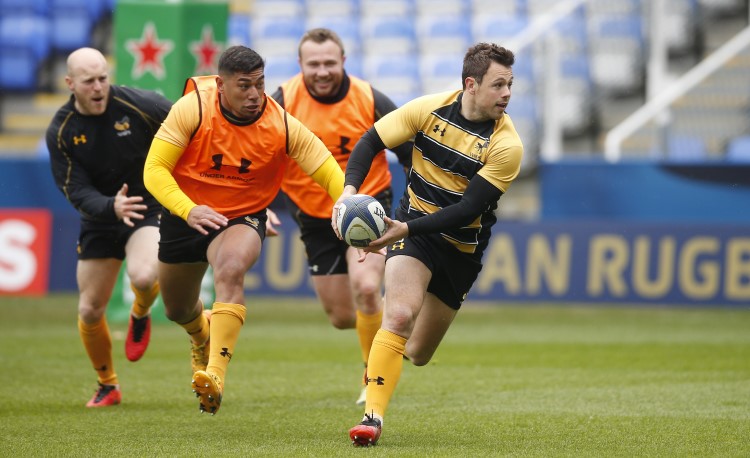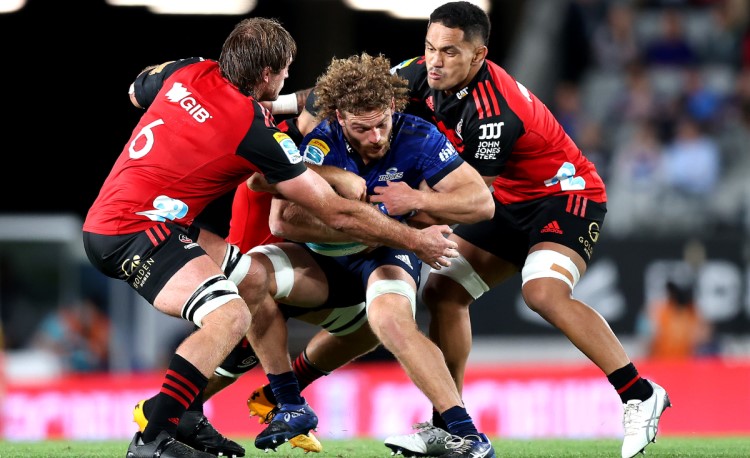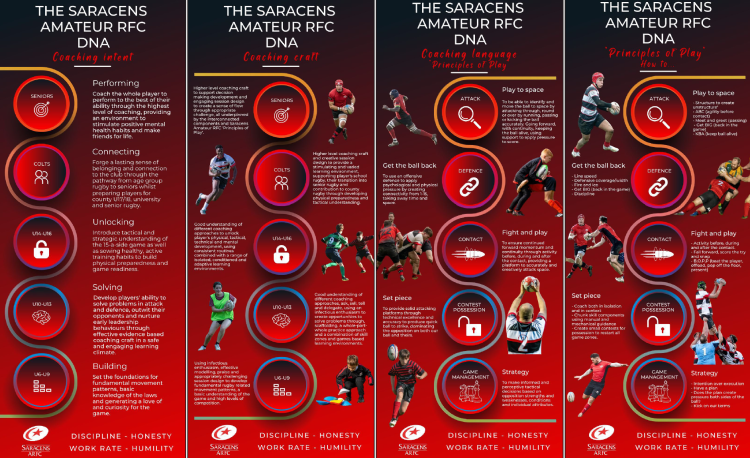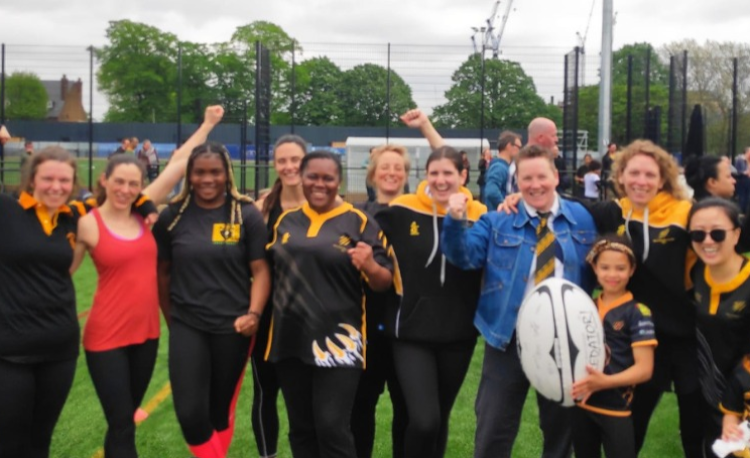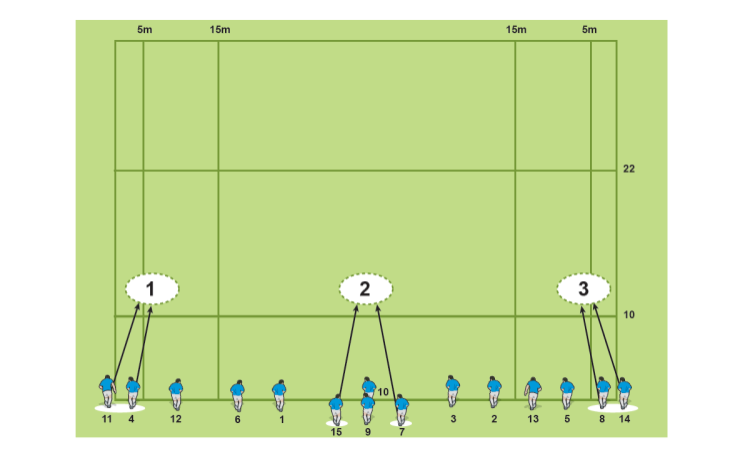You are viewing
1 of your 2 free articles
Planning for pre-season training
Periodisation means spreading out the different elements of your training programme over a number of sessions in a given time period, rather than running all the elements at the same time.
It has the advantages of variety, thus relieving boredom, and reduces injuries from the body being repetitively used in one area.
The following example plan is based on five weeks of pre-season training with the team training twice a week for two hours in total. The darker, red blocks are the key focuses and the lighter, orange blocks are when new elements are introduced.
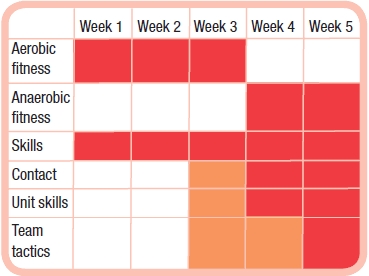
Weeks one and two
The focus is on building an aerobic fitness base, as this underpins the rest of the programme. At the same time the players need to rediscover and develop the basic skills of the game. The most effective method of combining both of these elements is through games.
Play small-sided games of touch or TAG in relatively large areas so players have to do a lot of continuous running.
The aerobic square example
Set up four equally sized pitches in a square, the size of these depends on the age and skill level of your players. Teams of three or four play “continuous touch” in each square.
You can stand in the middle and oversee all four games although responsibility for refereeing should lie with the players themselves.
Play for three minutes, with a 30 second break between games. Play again with four teams staying in their square and the other teams moving clockwise one square. So, after one rotation the players will have played 12 minutes of continuous touch.
You can play as many rotations as you like.
Continuous touch rules
It has the advantages of variety, thus relieving boredom, and reduces injuries from the body being repetitively used in one area.
The following example plan is based on five weeks of pre-season training with the team training twice a week for two hours in total. The darker, red blocks are the key focuses and the lighter, orange blocks are when new elements are introduced.

Weeks one and two
The focus is on building an aerobic fitness base, as this underpins the rest of the programme. At the same time the players need to rediscover and develop the basic skills of the game. The most effective method of combining both of these elements is through games.
Play small-sided games of touch or TAG in relatively large areas so players have to do a lot of continuous running.
The aerobic square example
Set up four equally sized pitches in a square, the size of these depends on the age and skill level of your players. Teams of three or four play “continuous touch” in each square.
You can stand in the middle and oversee all four games although responsibility for refereeing should lie with the players themselves.
Play for three minutes, with a 30 second break between games. Play again with four teams staying in their square and the other teams moving clockwise one square. So, after one rotation the players will have played 12 minutes of continuous touch.
You can play as many rotations as you like.
Continuous touch rules
- Tackles have to be two handed on the waist or below.
- The ball carrier has a count of two in which to pass after being touched or the ball is turned over.
- Defenders must make an effort to get back onside each time a touch is made.
- Defenders cannot interfere with the ball carrier after he has been touched.
- If the ball is dropped or passed forward it is a turnover to the other team, with the ball being tapped from the infringement point.
- The attacking team have an unlimited number of touches to score.
- When a try is scored the ball is left on the ground and the conceding team have to restart with a tap and pass within a count of five.
Newsletter Sign Up
Coaches Testimonials

Gerald Kearney, Downtown Las Vegas Soccer Club

Paul Butler, Florida, USA

Rick Shields, Springboro, USA

Tony Green, Pierrefonds Titans, Quebec, Canada
Subscribe Today
Be a more effective, more successful rugby coach
In a recent survey 89% of subscribers said Rugby Coach Weekly makes them more confident, 91% said Rugby Coach Weekly makes them a more effective coach and 93% said Rugby Coach Weekly makes them more inspired.
Get Weekly Inspiration
All the latest techniques and approaches
Rugby Coach Weekly offers proven and easy to use rugby drills, coaching sessions, practice plans, small-sided games, warm-ups, training tips and advice.
We've been at the cutting edge of rugby coaching since we launched in 2005, creating resources for the grassroots youth coach, following best practice from around the world and insights from the professional game.
More from us
© 2023 Rugby Coach Weekly
Part of Green Star Media Ltd. Company number: 3008779
We use cookies so we can provide you with the best online experience. By continuing to browse this site you are agreeing to our use of cookies. Click on the banner to find out more.




